How to Prepare Balance Sheet - Using a Company's Creation as Example
Having a financial mindset helps an entrepreneur build resource allocation skills and judgments. Here we discuss how to prepare balance sheet to help cultivate that understanding.
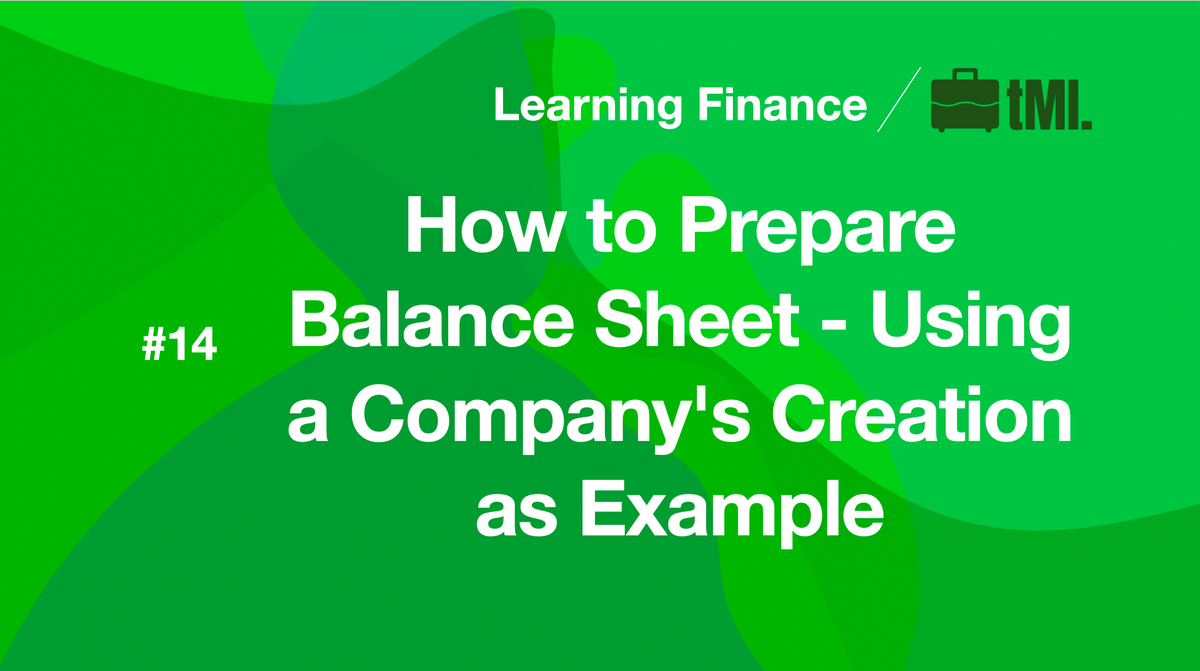
As an entrepreneur, it is NOT our job to prepare the book, i.e. the financial statement. We can always outsource the job to an accountant.
However, what we cannot outsource is how to deal with the numbers given back by the accountant. Will you be able to make the right call when allocating resources based on your judgment?
To improve our judgment in resource allocation, building a financial mindset will be crucial. Once you get it, you will understand how economic activities affect financial statements, but furthermore, you will understand how different factors play their roles in value creation for a company. In other words, once you get the financial mindset, you can use finance as a language to understand how values are created in operating a company.
In this episode, we will discuss the preparation of financial statements in order to help us understand how economic activities affect financial statements.
Let's start from the beginning of a company's life cycle - the creation of a business.
Before Creation
Before we invest any money into the new company, the balance sheet is blank. There is no asset, no liability, and no shareholder's equity.
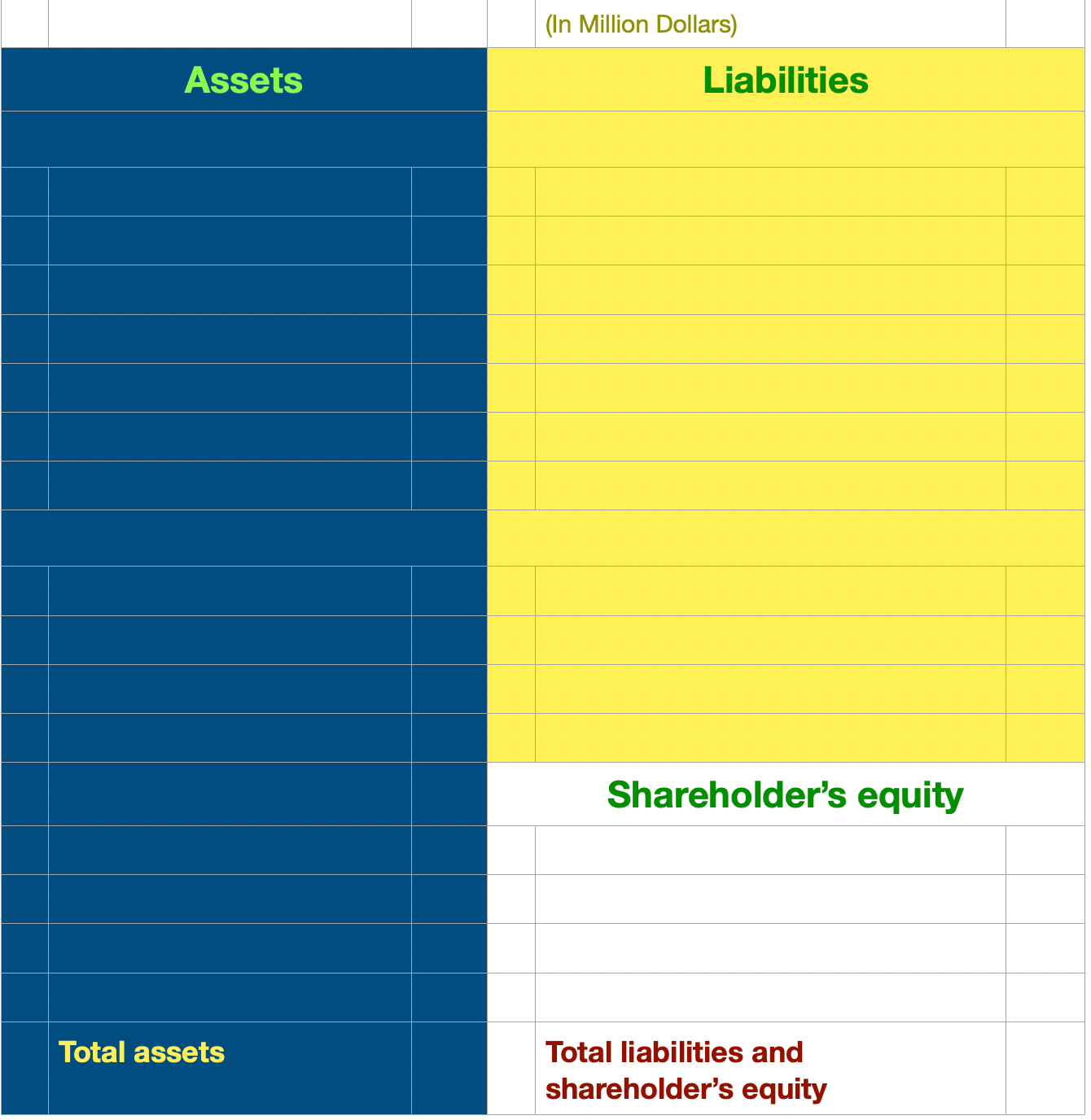
Capital Injection
As the sole shareholder of the company, I've decided to inject 32 million dollars. At this point, the company has only one thing on the balance sheet - money. On the balance sheet, 32 million dollars worth of cash will be recorded under Assets. At the same time, 32 million dollars worth of equity will also be recorded under Shareholder's Equity, balancing the financial statement.
At this point, there are only two items on the balance sheet, cash and equity, with the exact same value. The fundamental logic - assets = liability + shareholder's equity - still applies.
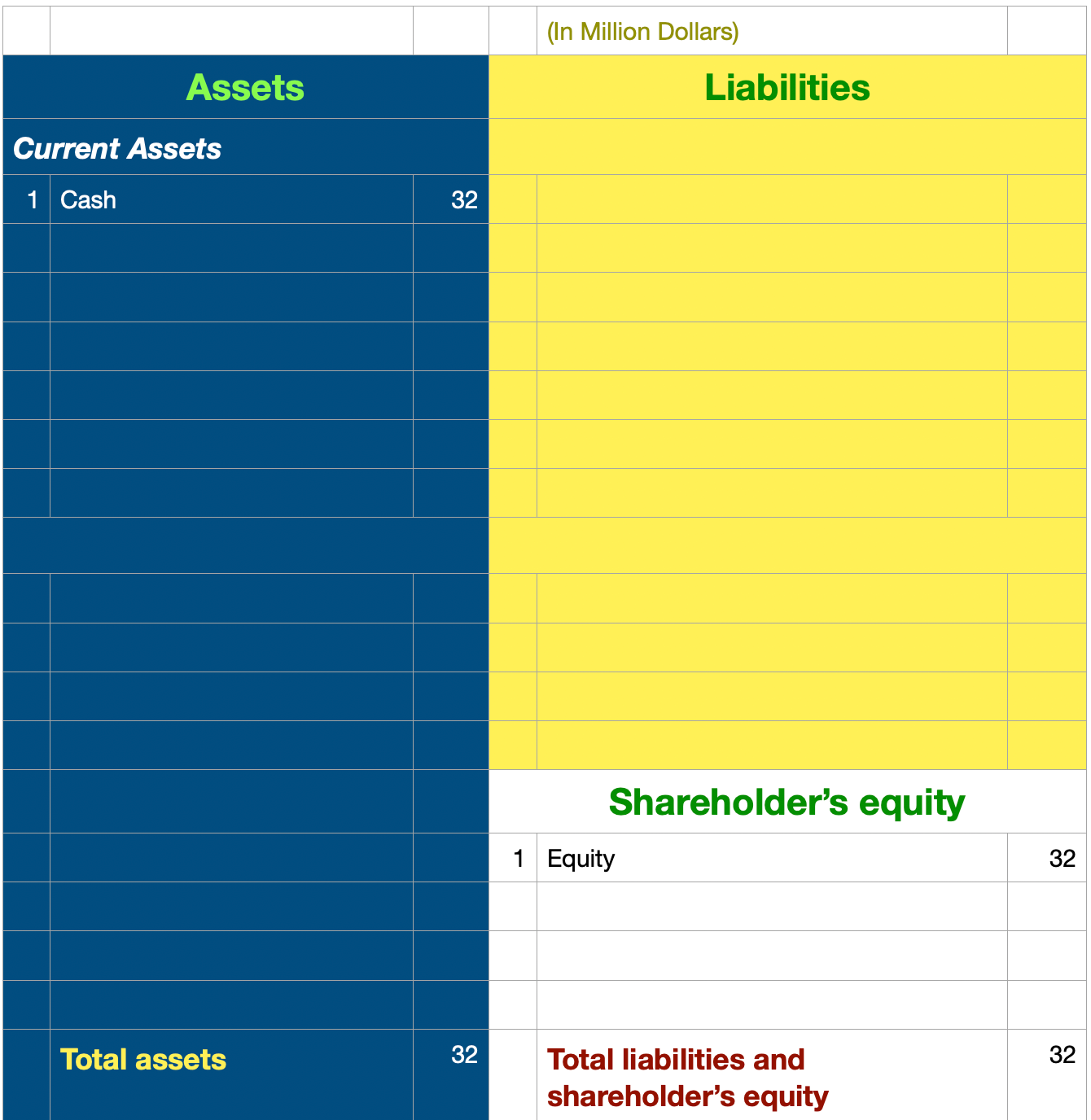
Getting a Loan
After my initial capital injection, I've decided to take out a loan from the bank. The bank, generously, has granted a total 51 million dollars, and wired the total amount directly to the company's bank account. All of a sudden, the total cash amount is increased to 83 million dollars.
Because the money is borrowed from the bank, there should be a 51 million dollar worth of liability under short-term borrowing, assuming that it is a 12-month loan.
After this, there are three items on the balance sheet by now, i.e. cash, short-term borrowing, and equity. The basic logic still applies.
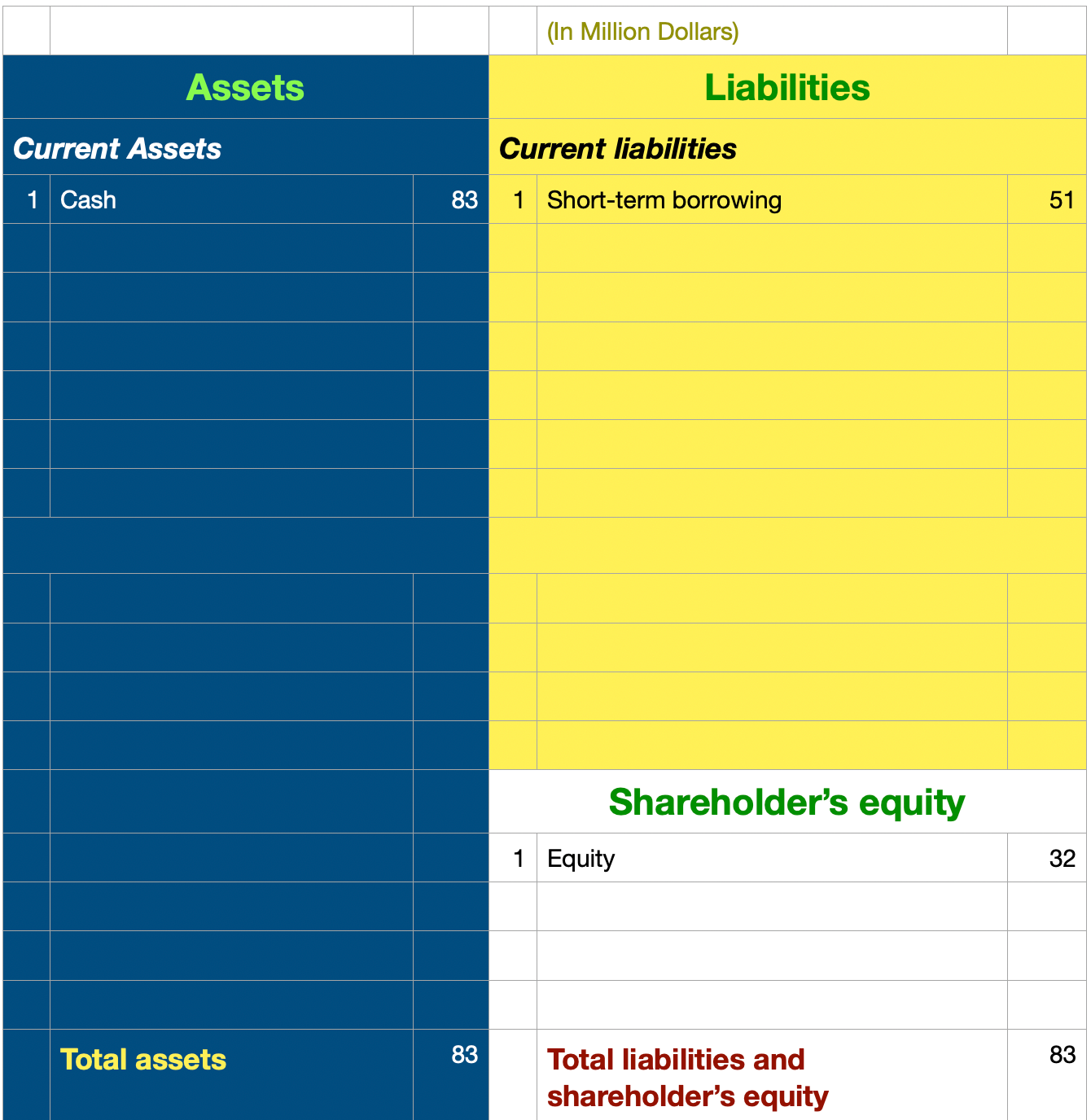
Fixed Assets Procurement
By now, all capital is in place for the company. The company then gets ready for doing business, and the first thing is to purchase some fixed assets (assuming it's in an asset-heavy industry such as manufacturing). The company then spends 57 million dollars on building a manufacturing plant, equipment and office furniture procurement, etc.
Our cash is then reduced by 57 million dollars, to 26 million dollars. At the same time, we've gained 57 million dollar worth of fixed asset.
The total of assets is still the same - 83 million dollars - but the percentage of each is changed.
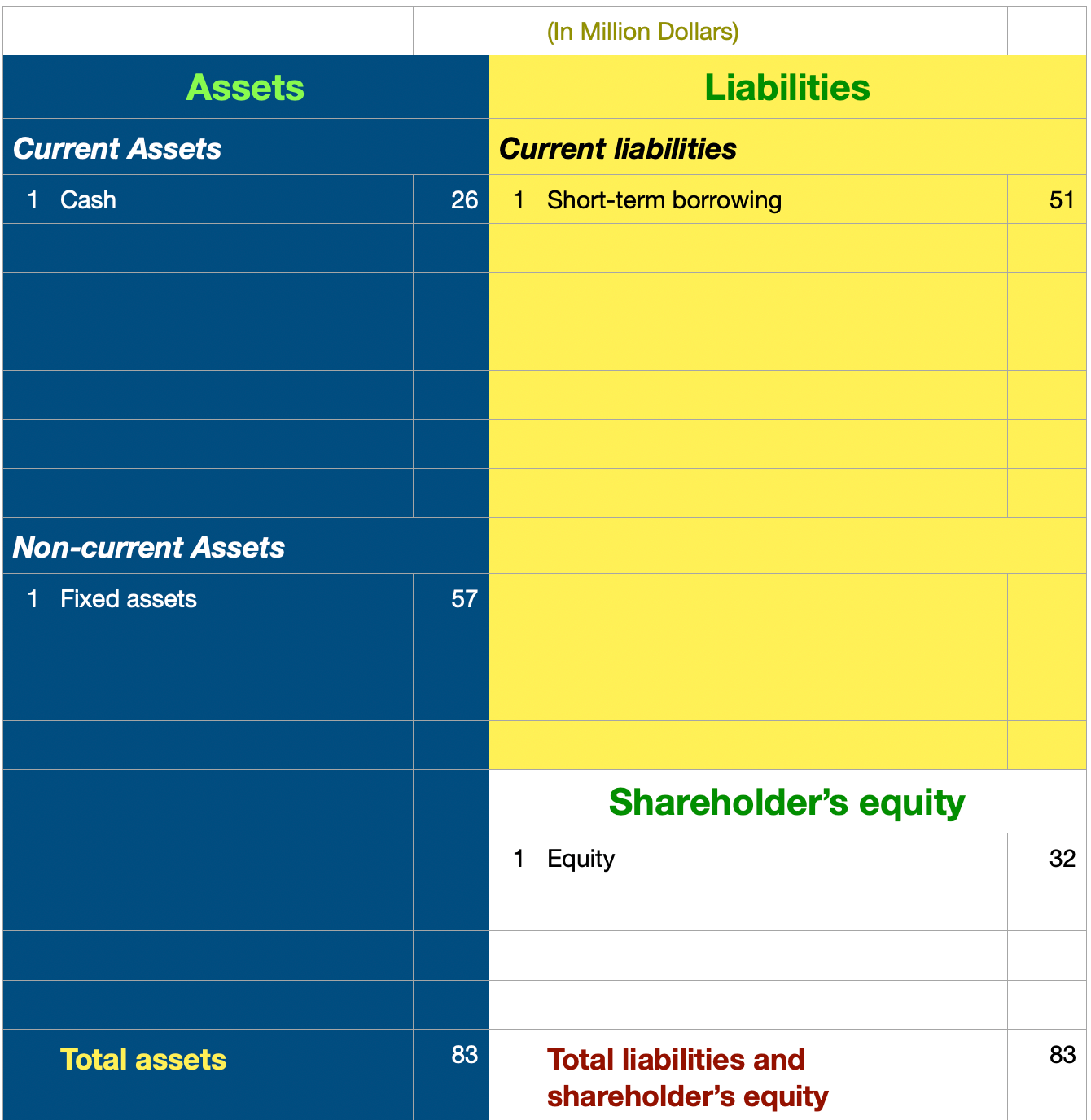
Land Usage Right Purchase
The company also purchase a land usage right from the government for 1.5 million dollars, and because land usage right is an intangible asset, we will deduct the cash amount from our cash item, and put 1.5 million dollars under intangible assets.
Similar to the previous economic activity, the asset total is still unchanged, but our percentage of cash is once again reduced.
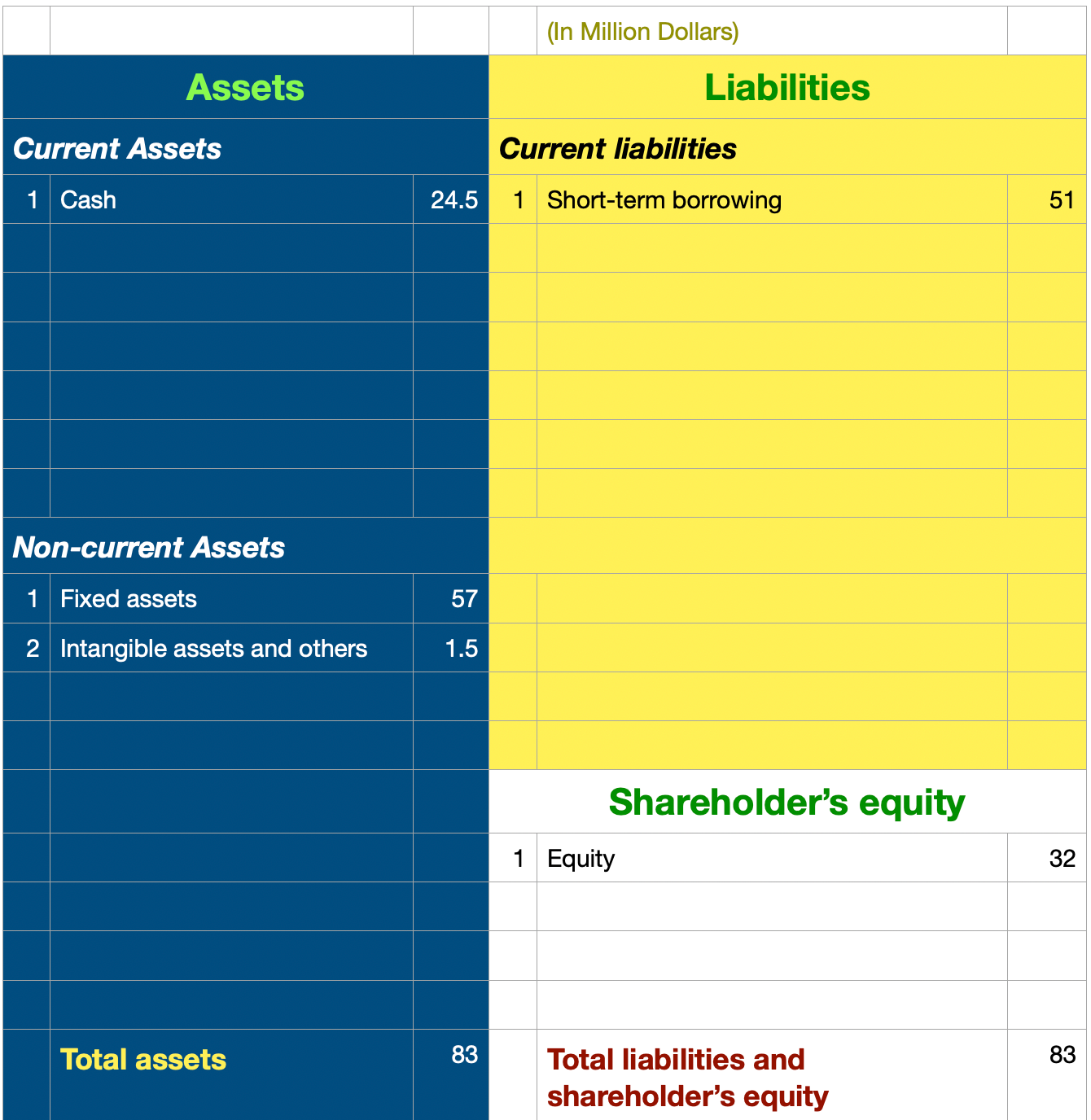
By now, the company has made all the necessary investments in infrastructure. Next it will start manufacturing, which will further change our financial statements. We will continue our learning in the next episodes.
